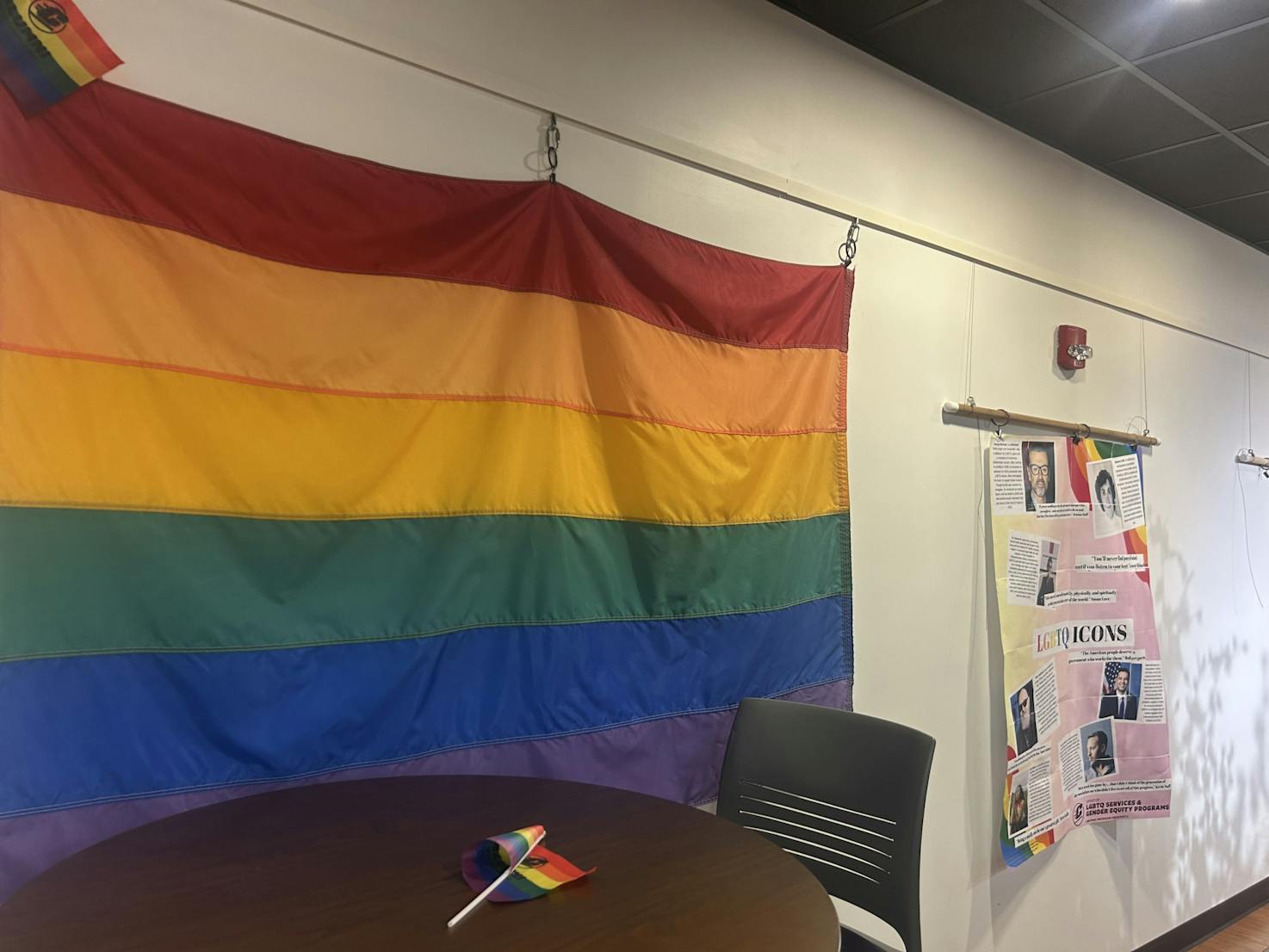Learning about identities, sexuality, gender

Bee Taylor, the director of LGBTQ+ Services and Gender Equity office on campus, runs a presentation about gender, sexuality and identity on Oct. 21.
Central Michigan University faculty and students had the opportunity to learn about labels, sexuality and gender this Monday morning as a part of the LGBTQ+ History Months on campus.
The presentation was run by Bee Taylor, the director of the Office of LGBTQ+ Services and Gender Equity Programs.
Taylor said the goals of the program were to develop a foundational understanding of sexuality, gender identity and gender expression as well as expose the group to new ideas, identities or concepts that will encourage future research.

LGBTQ+ flag decorates the Center for Student Inclusion and Diversity at Central Michigan University, where the Gender and Sexuality 101 presentation took place on Oct. 21.
“It's mostly meant to encourage you to learn more about things that you didn't know about prior, learn ways to support and affirm LGBTQ+ individuals,” Tayor said. “But then also learning about the resources that are available here at CMU.”
Taylor said labels or definitions of an identity are not 100% guaranteed due to human diversity. Although a lot of LGBTQ+ words within the LGBTQ+ identities serve as umbrella terms, meaning it makes the terms broad so that it applies to more people, they said.
"Sexuality is one's attraction or lack thereof to others, Taylor said. They said it is grouped into three sub-categories: attraction, behavior and identity."
“We see a lot of times with young people, their attraction and behavior may be the same, but their identity is different because they're working through labels or working through understanding which identity word fits them best," Taylor said.
Taylor also said that there is a difference between gender and sex. They used the analogy that gender identity is the frame and engine of the car. Meanwhile, gender expression refers to the lights, colors, or add-ons to the car.
The conversion also covered the differences between common sexuality terms such as gay, bisexual, lesbian, queer and pansexual.
While discussing the term "queer," Taylor dived into the background and history of the word, because "queer" has evolved it’s meaning over time, they said.
It began as a word that was used in theory and academia to talk about questioning something or considering something in a new way, Taylor said. And in the early 20th century, it became a derogatory word.
Taylor said that recently the word has been reclaimed as a way to refer to genders and sexualities that are explicitly not heterosexual or cisgender. But, they said, this term due to its historical background can be uncomfortable for some LGBTQ+ individuals, especially older ones. Additionally, the term is difficult to understand because it holds different meanings for different people.
“When you say you are queer, you know what that means in your head,” Taylor said. “When you say you're queer to someone else, or they call you that they are not calling you the same thing.”
Taylor in their presentation also talked about the legality behind name changes, scientific terminology and pronoun usage.
“All people use pronouns,” Taylor said. “Sharing them with other people, so introducing yourself with your pronouns, using pins and things like that, ensures the safety of the people around you, because if only one person is sharing their pronouns, how many of you could guess who might be trans? And it's uncomfortable.”
Taylor encouraged people when in doubt to ask questions. They said that mistakes happen and that it is best to correct them and move on.



